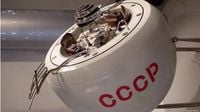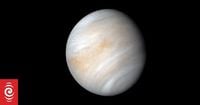In a remarkable turn of events, the Soviet-era spacecraft Cosmos 482, which has been orbiting the Earth for over 53 years, is expected to re-enter the atmosphere early on May 10, 2025. Originally launched in 1972 as part of the Venera mission to explore Venus, this piece of space debris is poised to make its descent, potentially landing in the Atlantic Ocean.
Cosmos 482, also known as Kosmos 482, was designed to be an atmospheric lander for Venus, tasked with gathering scientific data about the planet's surface and atmosphere. Unfortunately, an engine malfunction prevented it from leaving Earth’s orbit, leaving it to drift aimlessly around our planet since its launch. Its twin, Venera 8, successfully landed on Venus and transmitted valuable data for 63 minutes before succumbing to the planet's extreme conditions.
The upcoming re-entry of Cosmos 482 has sparked significant interest and concern among scientists and space enthusiasts alike. The spacecraft, weighing 495 kilograms (about 1,091 pounds) and measuring 1.17 meters in diameter, is considerably larger than most space debris, which poses a potential risk if it were to land on populated areas. However, experts believe it is likely to fall into a body of water, given the vastness of the oceans covering our planet.
NASA and the European Space Agency have been closely monitoring Cosmos 482's trajectory, predicting its re-entry window to be between 10 p.m. ET on May 9 and 6:30 a.m. ET on May 10. The European Space Agency estimates the descent will occur around 2:30 a.m. ET (06:37 UTC) on Saturday. The unpredictability of the spacecraft’s re-entry path means it could land anywhere between 52 degrees North and 52 degrees South latitude, covering a significant portion of the globe, including parts of North and South America, Europe, Africa, Asia, and Australia.
Despite the potential risks associated with such a large piece of debris, the chances of it causing harm are relatively low. Jonathan McDowell, an astrophysicist at the Harvard-Smithsonian Center for Astrophysics, points out that the risk of Cosmos 482 hitting someone on the ground is minimal, with estimates suggesting a one-in-25,000 chance of causing deadly damage. Most space debris burns up upon re-entry, but Cosmos 482's robust design, built to withstand the extreme conditions of Venus, raises the possibility that it could survive its journey through Earth's atmosphere.
McDowell notes, "This is a lander that’s supposed to land on Venus. Venus has an atmosphere that is 100 times more dense than ours. In other words, it was built to survive a hellish condition." This rugged construction means that while the spacecraft is expected to disintegrate upon re-entry, some fragments may make it to the surface. If any debris does reach land, experts advise against approaching it, as it could still be hazardous.
The history of Cosmos 482 is a reminder of the challenges faced by the early space exploration efforts. The Soviet Union launched a total of 16 Venera missions between 1961 and 1983, with varying degrees of success. Venera 3 was the first spacecraft to land on another planet in 1966, paving the way for further exploration. However, Cosmos 482's failure to reach its destination left it trapped in Earth's orbit, a testament to the unpredictability of space missions.
As the re-entry of Cosmos 482 approaches, the global space community is reminded of the importance of tracking and managing space debris. The risks posed by defunct satellites and other remnants of past missions continue to grow as more countries and private companies venture into space. The Aerospace Corporation and other organizations regularly monitor objects re-entering Earth's atmosphere, emphasizing the need for continued efforts in debris mitigation.
Looking forward, Russia has plans for a new long-term mission to Venus, named Venera-D or Venera 17, targeting the early 2030s. This mission aims to build on the legacy of the Venera program and further our understanding of Venus, a planet that has long captivated scientists with its extreme conditions and potential for study.
In the meantime, as Cosmos 482 prepares to make its long-awaited descent, researchers and space enthusiasts alike will be watching closely. The spacecraft's journey serves as a reminder of the enduring legacy of early space exploration and the ongoing challenges of managing the growing problem of space debris.


